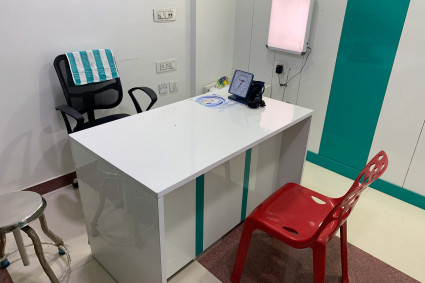
Our chest is one of the most vital parts of our body, responsible for keeping our respiratory system functioning properly. However, despite its crucial role, the chest is also susceptible to a wide range of conditions and disorders that can significantly impact our overall health and well-being.
From common issues like asthma and bronchitis to more severe conditions like pneumonia and lung cancer, understanding the complexities of these conditions is essential. This can help you take the necessary preventive measures and get treatment from a chest specialist in Patiala.
This guide aims to familiarize you with everything you need to know about chest conditions and disorders, including their causes, symptoms, and treatment options.
Anatomy and Function of the Chest
The chest, also known as the thorax, is a complex body area encompassing several vital organs, including the heart, lungs, and diaphragm. It is located between the neck and the abdomen and is protected by the ribcage.
The chest consists of several layers of tissue, including skin, fat, muscles, and bones. The ribcage, made up of 12 pairs of ribs, forms the protective outer layer of the chest. The sternum or breastbone is located in the center of the chest and connects the ribcage. The chest also contains a thin, dome-shaped muscle called the diaphragm, which separates the chest cavity from the abdominal cavity.
The chest plays a critical role in the respiratory system, responsible for taking in oxygen and expelling carbon dioxide. The lungs, located on either side of the chest, are responsible for the exchange of gases between the body and the environment. The chest muscles, including the intercostal muscles, work in tandem with the diaphragm to facilitate breathing.
In addition to its role in respiration, the chest also houses the heart, which pumps blood throughout the body. The heart resides in the center of the chest, behind the sternum.
Common Chest Conditions and Disorders
Following are some of the most common chest conditions and disorders. Knowing about these widespread problems can prompt you to take action timely and consult a chest specialist in Patiala.
Asthma
It is a chronic respiratory condition that affects the airways in the lungs. Asthma is characterized by inflammation, swelling, and narrowing of the airways, which makes breathing difficult.
Bronchitis
Bronchitis is characterized by inflammation of the bronchial tubes responsible for carrying air to and from the lungs. It is typically caused by a viral infection but can also be caused by exposure to irritants such as smoke or pollution.
Pneumonia
Pneumonia is a lung infection usually caused by bacteria, viruses, or fungi. It is characterized by inflammation and fluid buildup in the lungs, making breathing difficult.
Pulmonary Embolism
It is a blood clot that reaches the lungs and blocks one or multiple pulmonary arteries. This can lead to reduced oxygen supply to the lungs and other organs and can be life-threatening.
Lung Cancer
This cancer begins in the lungs and can spread to other parts of the body. It is usually caused by long-term exposure to tobacco smoke but can also be caused by other factors such as genetics and exposure to environmental toxins.
Chronic Obstructive Pulmonary Disease (COPD)
COPD makes it difficult to breathe. It includes two main conditions: chronic bronchitis and emphysema.
Pleurisy
Pleurisy is an inflammation of the lining around the lungs and chest wall.
Sarcoidosis
It is a rare condition that leads to inflammation in various body organs, including the lungs. It is considered an autoimmune condition, and its cause is unknown.
Pulmonary Fibrosis
It is a progressive lung disease that causes scarring of the lung tissue. The cause of pulmonary fibrosis is often unknown, but it can be caused by exposure to environmental toxins, certain medications, and autoimmune disorders.
Tuberculosis (TB)
TB is a bacterial infection that adversely affects the lungs. It is spread through the air when an infected person coughs or sneezes.
Causes, Symptoms, Diagnosis, and Treatment of Common Chest Problems
Understanding the common chest conditions and disorders, their causes, symptoms, diagnosis, and treatment can help you make informed decisions about your health and seek prompt medical attention from a chest specialist in Patiala when necessary. So let’s take a look at this essential information as follows:
Asthma
Causes: Asthma is caused by inflammation and swelling of the airways, which can be stimulated by various factors such as allergies, respiratory infections, exercise, and stress.
Symptoms: Asthma symptoms include wheezing, coughing, shortness of breath, chest tightness, and difficulty breathing.
Diagnosis: Asthma can be diagnosed through a physical exam, lung function tests, and allergy tests.
Treatment: Asthma treatment may include inhalers, steroids, and other medications. Avoiding triggers such as smoke and allergens can also help manage asthma symptoms.
Bronchitis
Causes: Bronchitis is usually caused by a viral infection but can also be caused by exposure to irritants such as smoke or pollution.
Symptoms: Bronchitis symptoms include coughing, wheezing, shortness of breath, and chest discomfort.
Diagnosis: Bronchitis can be diagnosed through a physical exam and a chest X-ray.
Treatment: Treatment for bronchitis may include rest, fluids, and over-the-counter medications. In some cases, antibiotics and other oral medicines may be prescribed by your chest specialist in Patiala if the infection is bacterial.
Pneumonia
Causes: Pneumonia can be caused by bacteria, viruses, or fungi. It is usually contracted by inhaling germs from the air.
Symptoms: Symptoms of pneumonia include fever, coughing, chest pain, and shortness of breath.
Diagnosis: Pneumonia can be diagnosed through a physical exam, chest X-ray, and blood tests.
Treatment: Treatment for pneumonia may include antibiotics, rest, and oxygen therapy. In severe cases, hospitalization may be required.
Pulmonary Embolism
Causes: A pulmonary embolism is usually caused by a blood clot that reaches the lungs from another part of the body, most commonly from the legs.
Symptoms: Symptoms of a pulmonary embolism include sudden onset of shortness of breath, chest pain, and coughing up blood.
Diagnosis: A pulmonary embolism can be diagnosed through imaging tests like a CT scan or ultrasound.
Treatment: Your chest specialist in Patiala may recommend treatment options like blood thinners, oxygen therapy, and surgery in severe cases.
Lung Cancer
Causes: Lung cancer is usually caused by long-term exposure to tobacco smoke but can also be caused by other factors such as genetics and exposure to environmental toxins.
Symptoms: Symptoms of lung cancer include persistent coughing, chest pain, and difficulty breathing.
Diagnosis: Lung cancer can be diagnosed through imaging tests such as a CT or PET scan and a biopsy of the affected tissue.
Treatment: Treatment for lung cancer may include surgery, chemotherapy, and radiation therapy.
Chronic Obstructive Pulmonary Disease (COPD)
Causes: COPD is caused due to prolonged exposure to irritants such as smoke, air pollution, and occupational dust and chemicals.
Symptoms: Symptoms of COPD include coughing, shortness of breath, wheezing, and chest tightness.
Diagnosis: COPD can be diagnosed through a physical exam, lung function tests, and imaging tests such as a chest X-ray or CT scan.
Treatment: Treatment for COPD may include inhalers, oxygen therapy, and pulmonary rehabilitation.
Pleurisy
Causes: Pleurisy is caused by inflammation of the lining surrounding the lungs, which can be due to infections, autoimmune disorders, or certain medications.
Symptoms: Symptoms of pleurisy include sharp chest pain that worsens with breathing, coughing, or sneezing, as well as fever, chills, and shortness of breath.
Diagnosis: Pleurisy can be diagnosed through a physical exam, chest X-ray, and blood tests.
Treatment: Treatment for pleurisy may include pain relievers, anti-inflammatory drugs, and treating the underlying cause.
Sarcoidosis
Causes: Sarcoidosis is a rare inflammatory disease that can affect multiple organs, including the lungs. The cause is unknown, but genetics, infections, or environmental factors may trigger it.
Symptoms: Symptoms of sarcoidosis can vary depending on the affected organs but may include coughing, shortness of breath, chest pain, and skin rashes.
Diagnosis: Your chest specialist in Patiala can try to diagnose sarcoidosis through a physical exam, chest X-ray, and other imaging tests, as well as a biopsy of the affected tissue.
Treatment: Treatment for sarcoidosis may include anti-inflammatory drugs, immunosuppressive medications, and other therapies, depending on the severity of the disease.
Pulmonary Fibrosis
Causes: Pulmonary fibrosis is a progressive lung disease that involves scarring of the lung tissue, leading to difficulty breathing. It can be caused by environmental factors, certain medications, or underlying conditions such as autoimmune disorders or viral infections.
Symptoms: Symptoms of pulmonary fibrosis include coughing, shortness of breath, fatigue, chest pain, and weight loss.
Diagnosis: Pulmonary fibrosis can be diagnosed through a physical exam, lung function tests, and imaging tests. These include a chest X-ray or CT scan and a biopsy of the affected tissue.
Treatment: Treatment options suggested by a chest specialist in Patiala may include medication to reduce inflammation and slow disease progression, oxygen therapy, and pulmonary rehabilitation.
Tuberculosis (TB):
Causes: TB is caused by Mycobacterium tuberculosis, which spreads through the air particles when an infected person coughs or sneezes.
Symptoms: Symptoms of TB include coughing, chest pain, fatigue, fever, and night sweats.
Diagnosis: TB can be diagnosed through a physical exam, chest X-ray, and other imaging tests, as well as a sputum culture to identify the bacteria.
Treatment: Treatment for TB involves a combination of antibiotics taken for several months, as well as measures to prevent the spread of the infection to others.
Prevention and Management of Chest Conditions and Disorders
Prevention and management of chest conditions and disorders are crucial to maintaining respiratory health. Follow these tips to prevent and manage chest conditions and illnesses:
Quit smoking: It is a leading cause of many chest conditions and disorders, including lung cancer, chronic bronchitis, and emphysema. Quitting smoking is the single most effective way to decrease your risk of developing these conditions.
Exercise regularly: Regular physical activity improves lung function and reduces the risk of developing chest conditions and disorders. Exercise can also help manage symptoms of existing conditions such as asthma and COPD.
Practice good hygiene: Washing your hands at regular intervals, covering your mouth and nose when sneezing or coughing, and avoiding close contact with people who are sick can help prevent the spread of respiratory infections.
Avoid environmental triggers: If you have allergies or asthma, avoid exposure to environmental stimuli such as pollen, dust, and animal dander. Use air purifiers and filters in your home and workplace to reduce exposure.
Manage existing conditions: If you have an existing chest condition or disorder, work closely with your healthcare provider to manage symptoms and prevent complications. We suggest you consult a chest specialist in Patiala, follow their prescribed treatment plan, and attend regular check-ups.
Conclusion
Chest conditions and disorders can significantly impact respiratory health and overall well-being. Understanding the anatomy and function of the chest, as well as common ailments and their causes, symptoms, diagnosis, and treatment, can help individuals take control of their respiratory health.
Healthy lifestyle habits and good hygiene can help you prevent and manage chest conditions and disorders more effectively.
Remember to consult a chest specialist in Patiala if you experience any symptoms related to your chest or respiratory system.
With proper prevention and management, individuals can enjoy optimal respiratory health and lead happy and healthy life.




